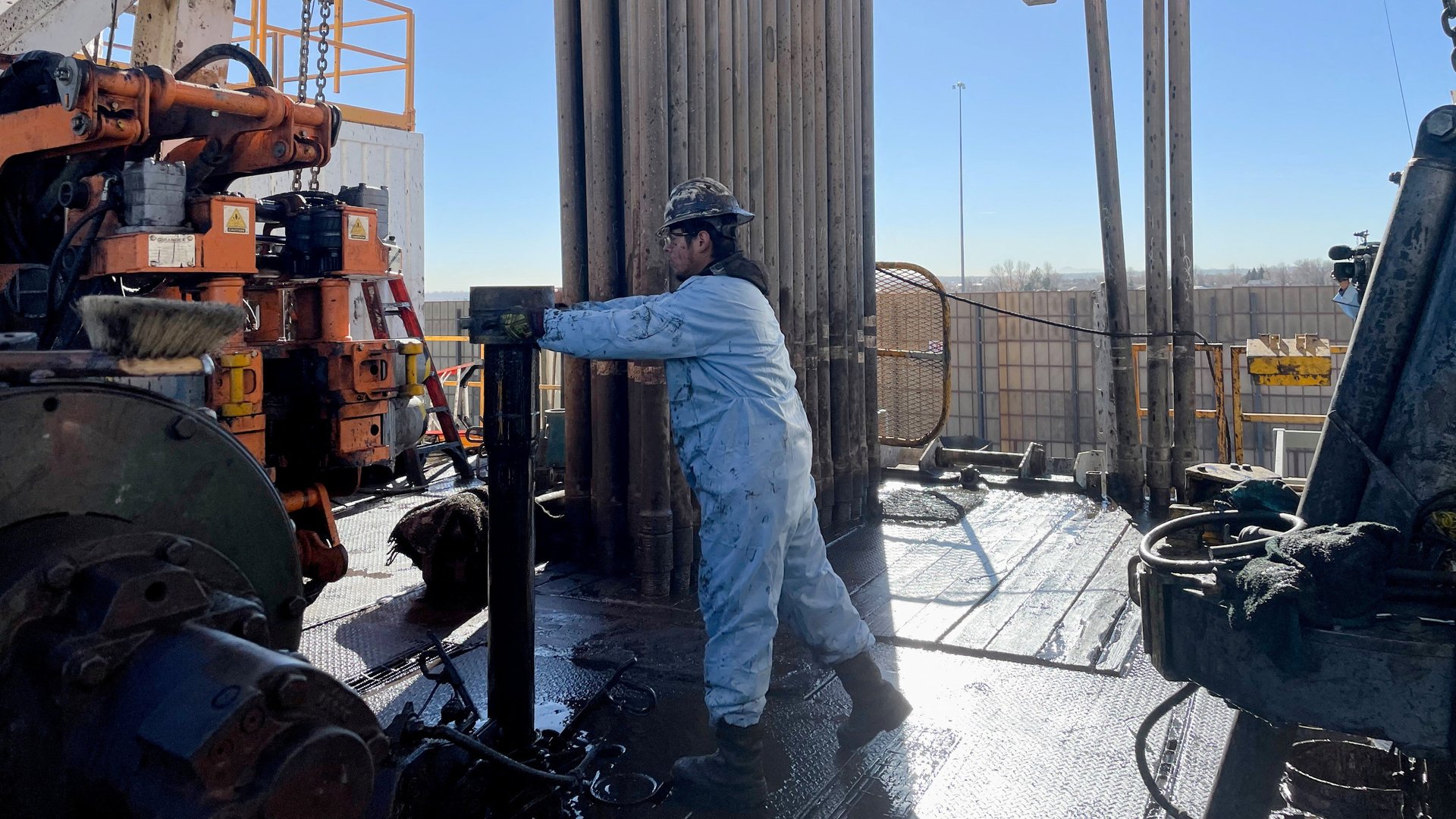Why aren’t US oil producers drilling more as prices rise?
In a free market, the saying goes, high prices cure high prices. If some good or service costs a lot, people will see an opportunity to make money producing more of it, thus driving down the price.


In a free market, the saying goes, high prices cure high prices. If some good or service costs a lot, people will see an opportunity to make money producing more of it, thus driving down the price.
Reality is messier. Oil prices have now risen to $104 a barrel. But investments in producing more, as measured by the number of oil rigs actively drilling for oil and gas, have barely responded. Since oil prices bottomed out in the middle of 2020, they have nearly doubled, but the number of new rigs counted by drilling service company Baker Hughes has increased just 13%.
With the petroleum market facing disruptions from Russia’s invasion of Ukraine, along with whipsawing economic conditions and rising inflation, it seems like a missed opportunity for investors. Certainly it’s a political problem for the White House, where officials know many voters are guided by gasoline prices. That’s why the Biden administration has released oil from the US strategic reserve into the market, and is allowing drilling on more federal lands. Those solutions are temporary and long-term, respectively.
The key issue facing the oil industry is underinvestment after the fracking boom collapsed. The business has been in recovery mode, focused on delivering steady dividends to shareholders as prices rise, rather than taking the risk of investing in new production. Some may believe that the high prices we see for oil and natural gas today will swiftly fall again if Russia ends its attack on Ukraine or the pandemic-inflected economic environment continues its return to normal.
Oil producers have other complaints beyond the licking they took in the marketplace. As the reality of climate change sets in around the globe, policymakers and investors alike have pushed for more investment in decarbonizing the economy. In the long term, that naturally makes oil investment less attractive.
Is ESG investing to blame?
One key villain for commodities traders is the ESG community, which has seen major funds and individual investors concerned with environmental, social, and governance issues seek sustainable assets for their money. A good chunk of that funding goes toward renewable energy, but most sophisticated analyses of ESG investments find they aren’t really that green. Nonetheless, oil market watchers say the strategy is robbing the sector of much-needed capital.
That seems a bit strange, if your baseline expectation is that investors are going to seek arbitrage opportunities. If oil assets are underbid due to non-economic factors, shouldn’t some smart trader make a killing?
“The scale of these industries are unlike anything else on the planet earth,” Goldman Sachs commodities chief Jeff Currie said in answer to this question on the Odd Lots podcast. “You take a Kashagan in the Caspian. It’s nickname was ‘Cash all gone.’ Why? You know, it was somewhere around a $60 billion project… so the first and most important issue is the scale.”
That’s a fair point, but at a time when Elon Musk can find banks willing to loan him $25.5 billion to buy money-losing Twitter, surely there must be some large investors who see opportunity in the oil market. Currie says private investors are driving up the price of oil stocks, which have gone up nearly 78% in the last year, per an S&P index tracking such equities.
That could lead to more production, but not anytime soon.